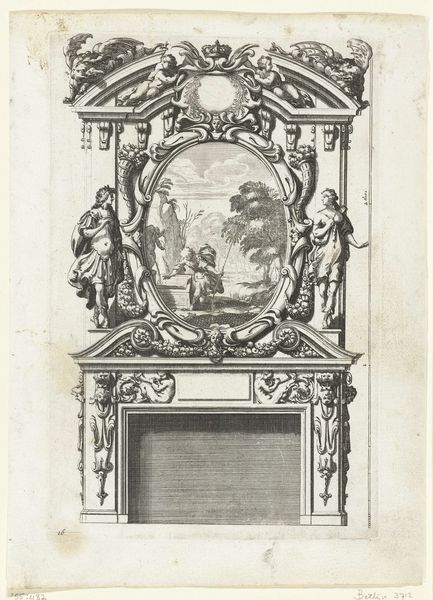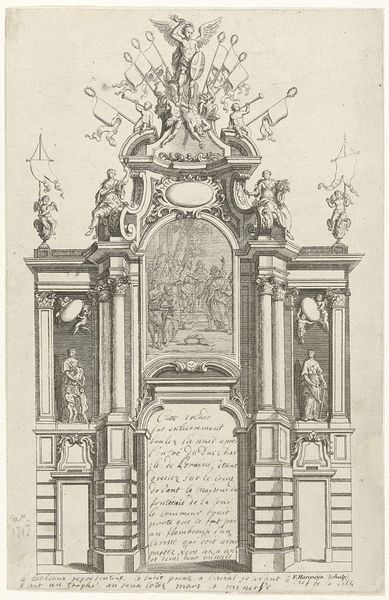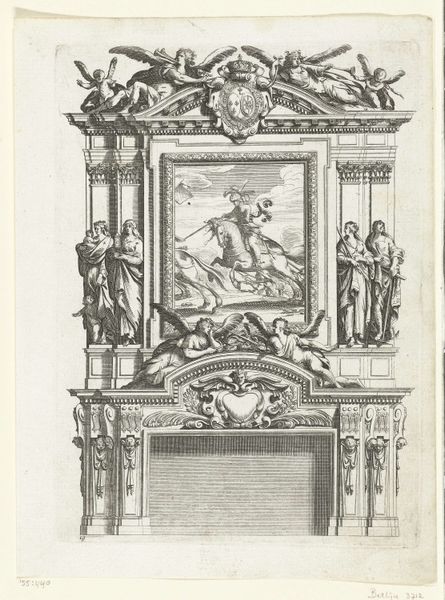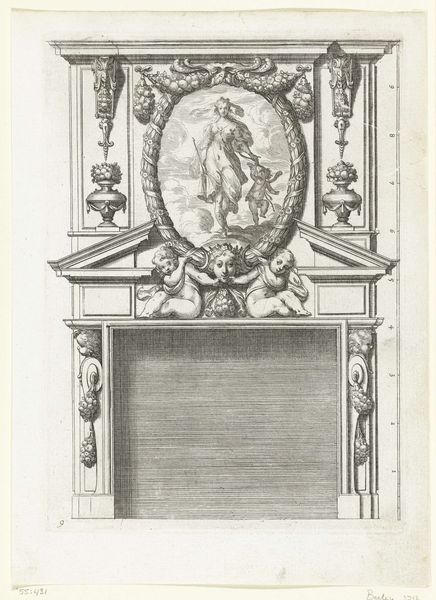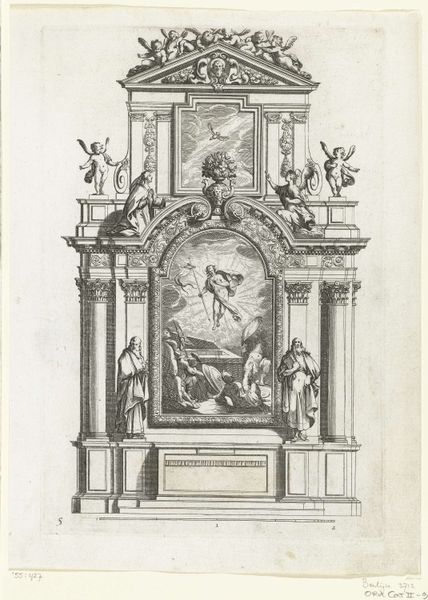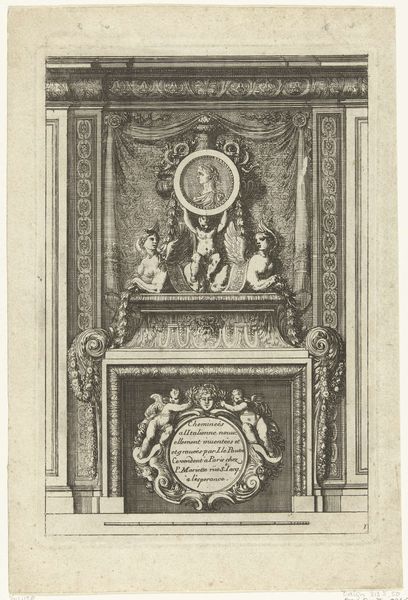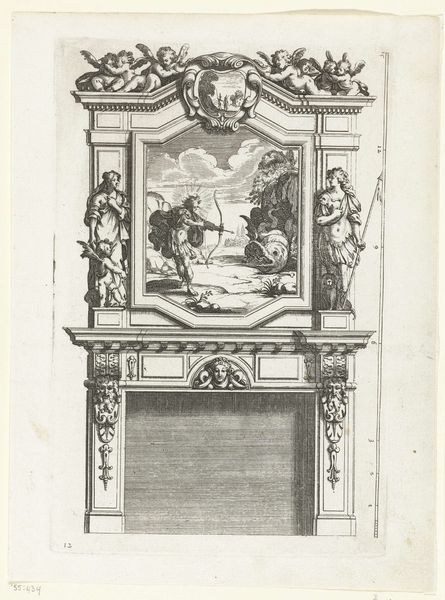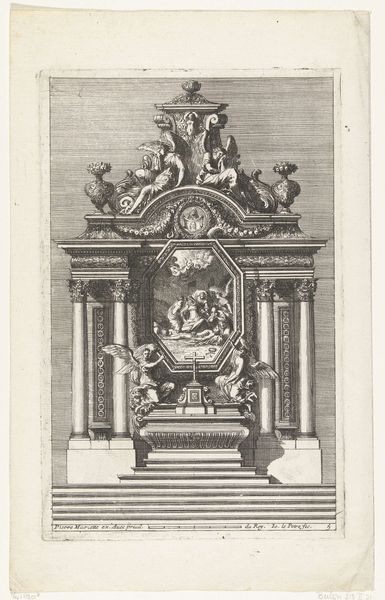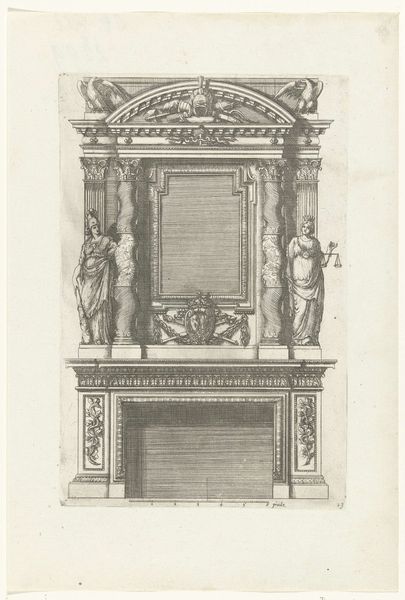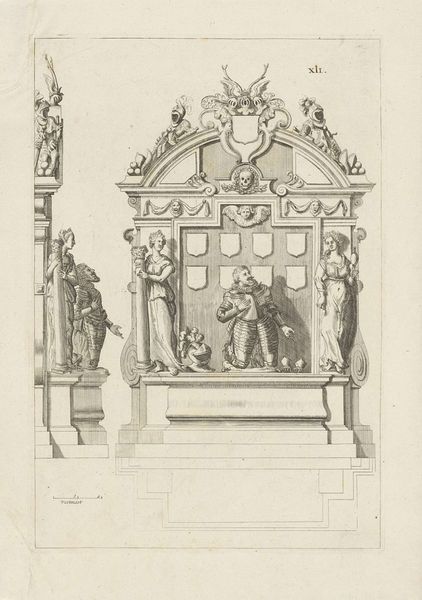
print, engraving
#
baroque
#
pen drawing
# print
#
line
#
history-painting
#
engraving
Dimensions: height 201 mm, width 142 mm
Copyright: Rijks Museum: Open Domain
Curator: Looking at Abraham Bosse’s engraving, “Onderboezem, schacht gedecoreerd met offerscène," created before 1643 and currently residing in the Rijksmuseum, I’m immediately struck by its intricate detail. Editor: Indeed. The weight of ornament seems almost unbearable. It conveys a formal gravity that seems both powerful and claustrophobic at the same time. Curator: The work offers us a fascinating glimpse into the decorative arts of the Baroque period. Bosse’s skill as an engraver allows him to capture the texture and density of a proposed chimney piece design with precision. Editor: Right, it makes me consider the social function of prints at the time, particularly regarding the spread of decorative trends and tastes among the bourgeoisie. It feels very connected to consumer culture. Curator: Absolutely. Note the figures acting out a historical or perhaps biblical scene of offering in the panel above. Consider too the labor involved in producing these complex ornamental designs for a single mantelpiece, intended for a wealthy patron’s home. The level of material excess is hard to ignore. Editor: I’m curious about the intended context and reception for such a highly stylized work. Who would be purchasing, commissioning and then experiencing these opulent surroundings and how it helped perpetuate power. Curator: Prints such as this functioned as prototypes, or models, for artisans to follow when constructing similar chimney pieces for affluent clients, which helped define the role and visual language of authority and taste. Editor: So, this print functioned not as high art in and of itself, but rather as a tool in a production line aimed at social one-upmanship among elite circles. I wonder about the conditions under which artists were being commissioned. Curator: By analyzing the social circulation and employment of skilled craftspeople, prints like Bosse’s highlight the interplay between labor, consumerism, and cultural power in the decorative arts during the Baroque era. Editor: A stark reminder that art, even in its most ornamental forms, can be a window into power dynamics. Curator: Precisely, and it enriches our understanding of that very relationship.
Comments
No comments
Be the first to comment and join the conversation on the ultimate creative platform.
